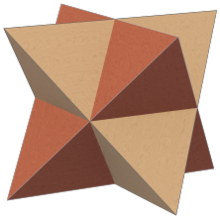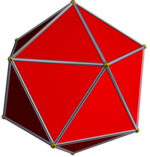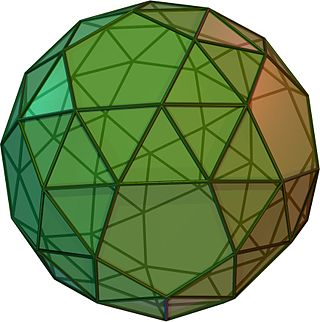A transitive set in $\mathbf{R}^n$ is a finite set with a transitive group of symmetries. I want to understand how subsets of a transitive set constrain the group.
Let me start with the example of a tetrahedron. A tetrahedron has symmetry group isomorphic to $S_4$, which is of course nonabelian. However, it is possible to embed the tetrahedron into a larger set, the cube, which has a transitive abelian group of symmetries isomorphic to $C_2^3$. (Of course, the full symmetry group of the cube is $C_2 \times S_4$, which is nonabelian, but my point is there is an abelian subgroup which is still transitive.) So we made things simpler by going bigger.
[pictures borrowed from Wikipedia]
My specific question is the same with (tetrahedron, abelian) replaced with (icosahedron, soluble).
Is there a finite set in $\mathbf{R}^n$ (with possibly $n > 3$) with a transitive soluble group of symmetries containing the vertices of a regular icosahedron?
I would also appreciate any references to related matters.
EDIT: Achim Krause answered trivially the question I asked but not the question I intended. At the risk of making my question a bit like Douglas Adams's concept of the Universe in that, if ever anyone discovers exactly what it is for and why it is here it will instantly be replaced by something even more bizarre and inexplicable, I now wish to replace "icosahedron" with "snub dodecahedron".
Now the group of rotational symmetries is $A_5$, which acts regularly on the vertices.
The point is I meant to choose a transitive set for which the answer was "obviously" no, but such that it is not clear how to prove that, especially if we allow embedding into possibly higher dimensions.




